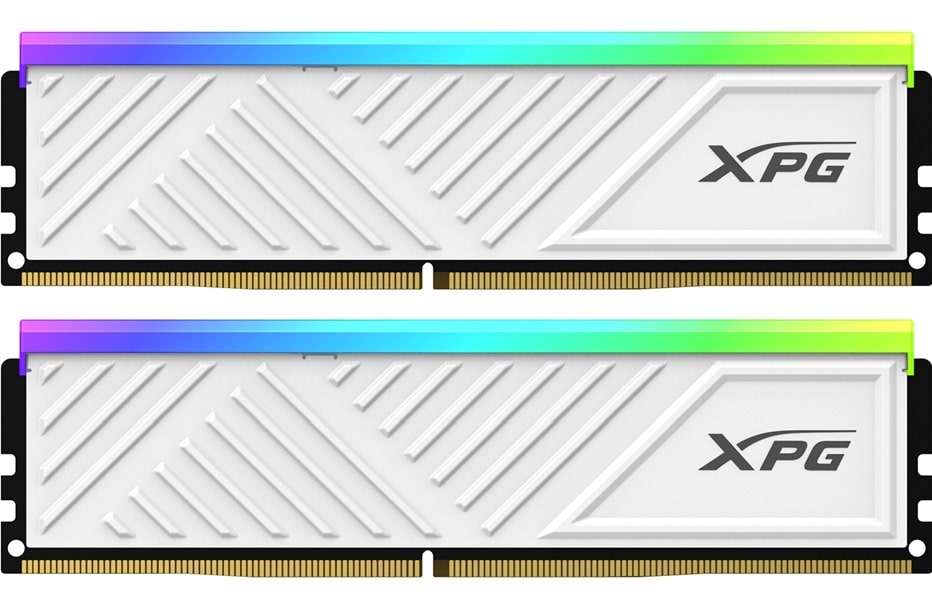RAM, which stands for Random Access Memory, is a type of computer memory that is used to store data that is currently being used by the computer's operating system, applications, and processes. It is a volatile memory, meaning that its contents are lost when the computer is powered off or restarted.
RAM plays a crucial role in the overall performance of all computer types – laptop, desktop, all-in-one. When you open a program or file, the data is loaded from the storage device (such as a hard drive or solid-state drive) into the RAM for quick access by the processor. The processor can read and write data to and from the RAM much faster than it can access data from the storage device, which helps to speed up the overall operation of the computer.

The amount of RAM in a computer determines how many programs and processes can be run simultaneously without slowing down the system. More RAM allows for smoother multitasking and faster data processing. It also helps to improve the performance of resource-intensive tasks such as video editing, gaming, and running virtual machines.
In addition to storing data that is actively being used, RAM also holds the operating system and other essential system files. This allows the computer to quickly access and execute instructions, resulting in faster boot times and overall system responsiveness.
Overall, RAM acts as a temporary workspace for the computer, providing fast and temporary storage for data and instructions that are actively being processed. It is an essential component of a computer system and plays a crucial role in its performance and responsiveness.
Why is the amount of RAM you have important?
The amount of RAM (Random Access Memory) you have in your computer is crucial for several reasons:
- Speed and Performance: RAM is much faster than your hard drive or an SSD. When you run a program or open a file, the data is loaded into RAM because it can be accessed much quicker. The more RAM you have, the more data can be loaded, which can significantly speed up your computer's performance.
- Multitasking: Each open application uses a portion of your RAM. More RAM allows you to run more applications simultaneously without slowing down your computer. If you don't have enough RAM, your computer will start using your hard drive to compensate, which is much slower.
- Complex Applications: Some applications, like video editing software or modern video games, require a lot of RAM. If you don't have enough, these programs may run slowly or not at all.
- System Stability: If your system runs out of RAM, it can become unstable and may crash, potentially causing data loss. It may also start using your local drive as a temporary source of memory to keep things running, but very slowly.
- Future Proofing: As software continues to evolve, it tends to require more resources, including RAM. Having more RAM can help ensure your computer continues to run smoothly with future software updates.
The amount of RAM you have can significantly impact your computer's speed, performance, and ability to multitask. It can also affect system stability and the ability to run complex applications.
How much RAM should you have?
The amount of RAM you should have in your computer depends on your specific needs and the tasks you plan to perform. Here's a general guideline:
- Basic Tasks: If you use your computer for basic tasks like browsing the web, checking email, or using office applications, 8GB of RAM should be sufficient.
- Multitasking and Light Media Creation: If you often have many tabs open in your browser, use more demanding software like Photoshop, or do light video editing, 16GB of RAM would be more suitable.
- Heavy Media Creation and Gaming: For heavy video editing, 3D modeling, high-end gaming, or running virtual machines, you might need 32GB of RAM or more.
- Professional Workstations: For professional workstations that handle tasks like 4K video editing, 3D rendering, scientific computing, or running multiple virtual machines, 32GB to 64GB of RAM (or even more) may be necessary.
Remember, these are just guidelines. The specific amount of RAM you need can vary based on the specific software you use and how you use your computer.
TIP: Keep in mind that having more RAM than you need doesn't typically improve performance, but having too little can significantly slow down your system.
How Do I Upgrade RAM?
Upgrading RAM in your computer involves several steps. Here's a general guide, but remember that the exact process can vary depending on your specific computer model:
- Check Compatibility: Before purchasing new RAM, you need to check what type of RAM is compatible with your computer. This includes the type (DDR3, DDR4, etc.), the maximum amount of RAM your system can handle, and the number of RAM slots available. This information can usually be found in your computer's manual or on the manufacturer's website.
- Purchase the Right RAM: Once you know what type of RAM to buy, you can purchase it from a reputable retailer. Make sure the RAM you buy matches the specifications you found in step 1.
- Turn Off Your Computer: Before you start, shut down your computer and unplug it from the power source. It's also a good idea to ground yourself by touching a metal object to prevent static electricity from damaging the components.
- Open Your Computer: This step will vary depending on whether you have a desktop or a laptop. For a desktop, you'll typically need to remove the side panel. For a laptop, you may need to remove the entire back panel or just a small part that covers the RAM slots. All-in-One computers often require the removal of the entire back panel.
- Remove Old RAM (if necessary): If all your RAM slots are full, you'll need to remove the old RAM to make room for the new one. To do this, gently push down on the clips at either end of the RAM slot. The RAM stick should pop up and you can then pull it out. If you have removed RAM, you will need to make sure the new RAM is a lot bigger to make up for this. E.g. if you had 2x8GB sticks, and you “add” a 16GB, you will need to remove one of the 8GB sticks, the net result will be a computer system with 24GB of RAM (not 32GB as you might have hoped). We have often, in such cases, just replaced both sticks.
- Install New RAM: Align the notch on the bottom of the new RAM stick with the ridge in the RAM slot. Gently push the RAM stick into the slot until the clips at either end snap into place, securing the RAM.
- Close Your Computer and Restart: Once the new RAM is installed, you can close up your computer, plug it back in, and turn it on. Your computer should automatically recognize the new RAM.
- Check the RAM: To make sure your computer is recognizing the new RAM, you can check in the system settings. On Windows, you can do this by going to "System" in the Control Panel. On a Mac, you can click "About This Mac" from the Apple menu.
TIP: If you hear beeping after the upgrade and nothing on screen, the memory has not installed correctly. Repeat the process and ensure it’s clipped in properly
TIP: many tablets cannot have their memory upgraded.
Remember, if you're not comfortable upgrading your computer's RAM yourself, you can always get us to do it for you, we’re always here to help – it’s in the NAME!

